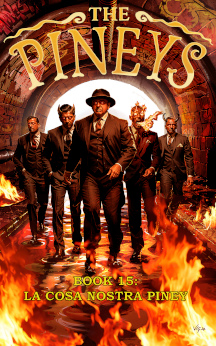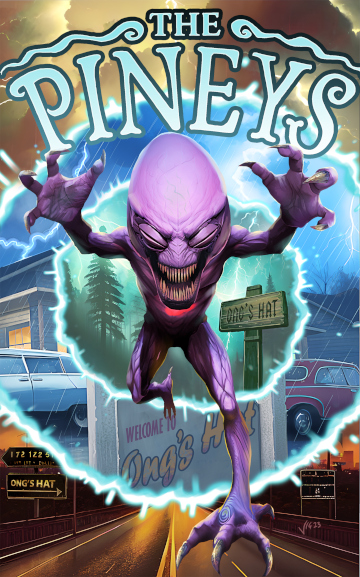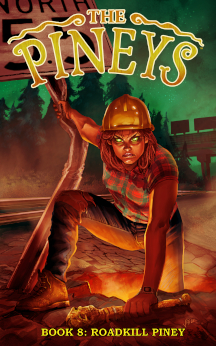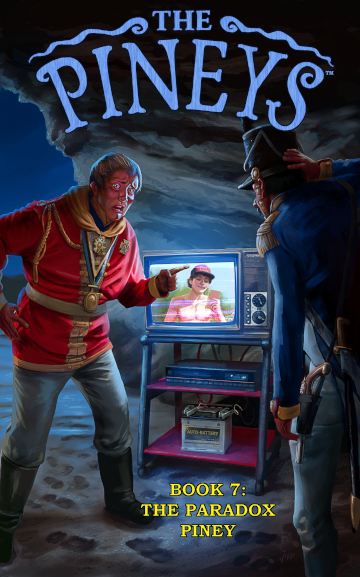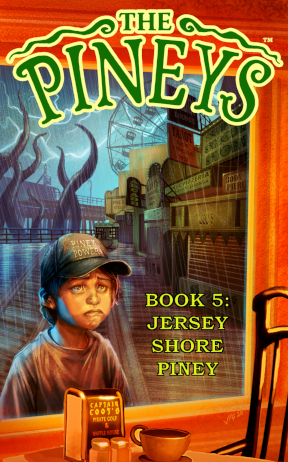Life Skills for Fanboys: Rethinking the Comic Book Con
on March 17, 2014 at 12:01 amLife Skills for Fanboys: Rethinking the Comic Book Con
written by Tony DiGerolamo, Copyright 2014
To further my goal of helping fellow fanboys, I have included an index of links of previous columns with their topics. Don’t take it personal, I’m just trying to help. Previous columns are indexed at the end.
The Ancient Past
A million years ago, or sometime around the summer of 1993 in comic book terms, I was hosting, producing and shooting The Comic Book Show, Philadelphia’s syndicated TV show about comic books. We had gone down to Baltimore for the big Diamond trade show. (I dropped the camera halfway through the first day, total disaster, but that’s another story.) Now the trade show was a lot different than your average comic books convention.
First, it was only for comic book store owners. Second, it was being held during the last, great hey-day of comic books. Superman was dead, sales were through the roof and every fat little comic book store owner was thinking about expanding. It was a time of variant covers, big name talent and big numbers at Diamond. (A year later, it would lay in ruin, like the final installment of Mass Effect.)
Anyhow, I’m wandering around, looking for creators to interview, when I notice Dave Sim, creator of Cerebus. His booth is a carpet, several comfortable couches and a lamp on an end table. It looks kind of like a talk show. While everyone else is standing behind a table or an elaborate booth, here’s Dave, hanging out, very personable, with the store owners.
Applying the Logic
Then I thought, why don’t more creators do that? I mean, Dave wasn’t going to sit there and do sketches for everyone. (He was famous enough where he didn’t really have to do that sort of thing.) He didn’t need to sell comics, the dealers at a regular comic con would do that. (In fact, they would prefer that a big name like Dave didn’t sell his inventory.) Instead, he was creating a relaxing environment where you could actually talk and hang out with him. Kind of a cool setting. Why not apply that to other large conventions?
So instead of standing in line for hours, waiting for a five minute interaction with your favorite creator as he signs your comic. You could, instead, hang out and ask him questions, face to face like a human being.
Then I thought, maybe that’s not so practical with a large show and thousands of people. Why not then set up cameras and an in-house TV system. You could have a host interview these creators every hour. Fans could watch in the immediate area or watch on the closed circuit TV inside the convention center. You could set that up in the Snack Bar eating areas. Or, do like Dragon Con TV, and have the video run through all the hotels.
One step further: you burn the interviews onto DVD’s and sell them at the shows. Burning a DVD doesn’t cost much. You could probably sell them for like, five bucks, to pay for the cost and effort of production. Then later, you could compile a “best of” compilation, with the proceeds going to the con and/or some charity. This, to me, was thinking outside the traditional convention box.
Small Shows Can Change Too
The biggest problem at a small show is space. Why not consolidate? Have all the creators pool their product onto a couple of tables. It can be a store, run by the con organizer that keeps track of all the sales. Then the creators are free to do panels, roam the room, draw, talk or whatever. An interactive activity with fans and creators is always a big plus. Maybe we could all hang out in the hotel bar. (That’s where we like to go after a show anyway.)
Family Planning
I think gearing comic book cons to families is a mistake, but if you’re going to do it, have something for kids to do. Nice characters in costumes is a must and you should be able to take your picture with them for free or next-to-free. A play area for the kids would also be nice. I remember when Comicfest ’93 had a pog area for the kids. Get some free video game demos too. And obviously you are either going to have to censor things or, what I would prefer, a PG-13 or R-rated area that’s clearly marked.
Honestly, the cost isn’t going to outweigh getting the families through the door, in my opinion, but at least give them something. Free comics, some cheap plastic toys— Don’t just market your con to the families and then turn them lose after dropping eighty bucks at the door. It turns people off of comics.
The Sci-fi/Fantasy Con Format
At Sci-Fi/Fantasy Cons, the emphasis is on the creators and authors and the dealer room is geared to the size of the hotel. Not every creator is going to have a table, but they can sell stuff during panels. Some creators don’t even want to be at their table for most of the day and if they can only sell during panels, they’re more like to do more of them. Connecting with the comic fans, whether you do webcomics or print, is more important than ever.
The Future
I think webcomic conventions are the future. This is a chance to reinvent cons. So far, what I’ve seen at Intervention con, things seem to be leaning to the Sci-Fi/Fantasy format. It needs to be more high tech. Intervention Con has its con-wide wifi, but I also think we need creators via Skype at panels. This is an amazing opportunity to have big name guests without paying the big name price. I did a panel via Skype for some con in, Kansas, I think? Anyhow, wish I could remember. It was very cool though.
Plus sites like Cultbubble and Comicon.com. They seek to be the 24 hour, Internet con. Not a bad idea. That way, I can finally attend a con in my underwear.
Previous Columns
Grooming The Line Between Fans and Pros
Stop Bringing Your Kids to Cons



